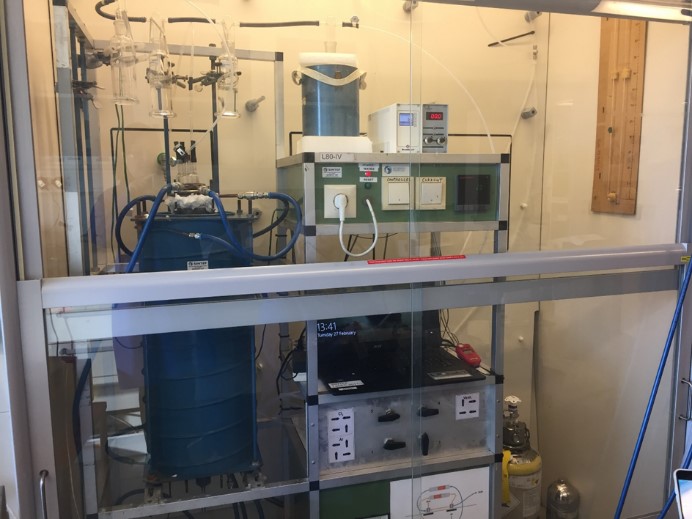The use of molten salts as “solvents” offer interesting possibilities for the treatment of ores, industrial by-products as well as scrap. By using salts in the temperature range 200-500 °C, it is possible the development of processes that are mid-way between pyro-and hydrometallurgy, with the advantage of salts offering a wide choice of chemical and electrochemical properties.
One of the most interesting applications of “molten-salt” extractive metallurgy is the selective chemical reaction with the ores, metal oxide mixtures, or waste material. The molten mixtures can be fed to industrial electrolytic cells (electrometallurgy) where the reactions can take place. One example of this type of reactions is the selective chlorination using gaseous mixtures in a molten chloride salt mixture.
Chlorination of metallic oxide mixtures (or even ores or industrial by-products) in molten chlorides media can take place at moderate temperatures, leading to the selective separation of the different compounds by choosing the appropriate conditions (salt, temperature, chlorinating agent, etc). The dissolution reaction is favoured by significant solvation of the oxide ion (O2-) and the produced metal cation (Mn+) giving stable complexes with the anions (Cl–) of the solvent. This is a considerable advantage compared to classical gas-solid reaction systems using solid reductants (i.e. carbo-chlorination), where the rate and conversion levels are limited by the intimate contact of the reductant and the metal oxide particles, and the reaction is occurring non-selectively at much higher working temperatures (ca. 1000 °C).
SINTEF has investigated the possibility of selective chlorination of the PGM elements contained in spent catalyst samples, without pre-treatment (up-concentration) of the material, using a molten salt media as reaction media. In this way, many steps can be avoided, and the PGM can be separated from the matrix in a single and simple step.

Detail of the experimental set-up used for the selective chlorination of spent catalyst samples at SINTEF
In order to predict the selective separating conditions of the PGM elements from the sample matrix, the Pourbaix type E-pO2- diagrams of the PGM and other components in the spent catalyst were be established using thermodynamic data, as well as data from the literature. The comparison of these diagrams with those of relevant chlorinating gaseous mixtures, allowed to predict the optimal chlorinating conditions. The most promising conditions were tested and confirmed experimentally. In the end, he possibility of extracting the PGM dissolved in the molten salt by electrolysis was then evaluated. The results are reported in a confidential deliverable report.
